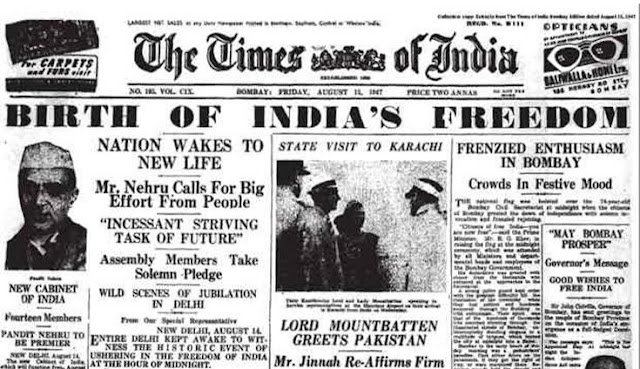Celebrating 74 Years of India's Republic Day: A Look Back at the Evolution of the Grand Parade
Republic Day in India is celebrated on January 26th every year to commemorate the day when the Constitution of India came into effect in 1950, replacing the Government of India Act (1935) as the governing document of India.
The Constitution was adopted by the Indian Constituent Assembly on November 26, 1949, and came into effect on January 26, 1950.
The Republic Day celebrations begin with a grand parade held in the capital city, New Delhi, at Rajpath, which is attended by dignitaries from all over the world, as well as a large number of people from all over India. The parade features a display of India's cultural and military heritage, as well as floats representing different states and Union Territories of India. The highlight of the parade is a display of tableaux, depicting the cultural and economic heritage of the various states and Union Territories of India.
Over the years, the Republic Day parade has seen a number of changes and additions. One of the most notable changes is the inclusion of a display of India's military might, including the participation of the armed forces in the parade. Additionally, the parade now includes a display of India's technological advancements, including a display of the country's space program and other scientific achievements.
The Republic Day celebrations also include the President of India giving a speech from the ramparts of the Red Fort in New Delhi, in which he/she addresses the nation and highlights the achievements of the past year.
Despite the grandeur of the parade and the celebrations, Republic Day in India has also been marked by several controversies and conflicts over the years. One of the most notable controversies is the ongoing dispute over the use of the national flag. In 2002, the Supreme Court of India upheld a ban on the use of the national flag by private citizens, which led to widespread protests and condemnation.
Republic Day in India is an important national holiday that commemorates the adoption of the Constitution of India and the birth of the Republic of India. The day is marked by a grand parade and cultural program, as well as speeches by dignitaries, but over the years it also saw controversies and disputes that reflect the diversity and complex nature of Indian society.
Why did it take so long for India to become a Republic?
India's journey to becoming a republic was a long and complex process, shaped by a variety of historical, political, and social factors. The first major push for independence from British rule in India came in the form of the Indian National Movement, which began in the late 19th century. The movement was led by a variety of political figures, including Mohandas Gandhi, who used non-violent civil disobedience as a means of protesting British rule. Despite the efforts of the independence movement, India remained under British rule for many years.
In the 1940s, the independence movement gained momentum, with increasing numbers of people joining the struggle for freedom. This was partly due to the weakening of the British Empire during World War II, and the growing realization among the British that it would be difficult to maintain control over India in the post-war world. After India gained independence in 1947, the process of drafting a new constitution began. The drafting of the constitution was a long and complex process and took several years to complete. It was finally adopted on 26th November 1949, but it came into effect on 26 January 1950, officially making India a republic.
4 Fascinating Facts about India's First Republic Day Celebration:
- Dr. Rajendra Prasad took the oath as India’s first President on January 26, 1950, marking the official end of British colonial rule and the beginning of a new era of self-government. He served as the President of India for two consecutive terms from 1950 to 1962 and played a key role in the establishment of the Indian Republic.
- The first venue of the Republic Day was Irwin Stadium (now known as Major Dhyan Chand) Stadium) in New Delhi. The stadium was named after British military officer and administrator, Sir Henry Irwin, who served as the British Resident of Mysore and later as the British Agent in Hyderabad. The stadium was later renamed in honor of Indian field hockey player, Major Dhyan Chand, who is considered one of the greatest players in the history of the sport.
- The first Republic Day was marked by a grand parade by the Armed forces, showcasing India's military might, and the parade was attended by a large number of people from all over India. The parade featured a display of India's cultural and military heritage, including floats representing different states and Union Territories of India, and a display of tableaux depicting the cultural and economic heritage of the various states.
- The chief guest of the first Republic Day was the Indonesian President Dr. Sukarno. He was the first foreign dignitary to be invited to attend the Republic Day parade in India, and his presence at the event symbolized the growing ties of friendship and cooperation between India and Indonesia. Dr. Sukarno was a key figure in the Indonesian independence movement and served as the country's first President from 1945 to 1967. His visit to India on the first Republic Day was seen as a significant step towards strengthening the relationship between the two nations.









Comments
Post a Comment